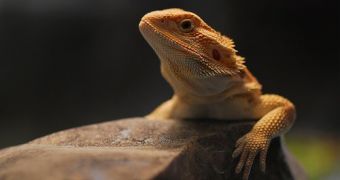Three hundred million years ago, global warming decimated the Earth's tropical rainforests, and ironically, allowed reptiles to evolve.
During the Carboniferous Period, when Europe and North America laid on the equator and were covered in steamy tropical rainforests, a global warming triggered a rapid collapse of the tropical rainforest biome (Coal Forests), which allowed the diversification of amphibians and reptiles (Carboniferous tetrapods), in Euramerica.
The reptiles actually thrived and opened the way to future dinosaurs, a hundred million years later.
University of Bristol researchers said that this conclusion is based upon “an analysis of global and alpha diversity database in a precise geologic context.”
In other words, they analyzed the fossil record of reptiles before and after the collapse of the rainforest, and they concluded that the reptiles became more diverse, and even modified their feeding habits in order to better adapt to climate change and the new environment.
Rainforest collapse triggered the extinction of some species and the evolution of others, especially reptiles, as they managed to adapted to the drier conditions that followed.
“Climate change caused rainforests to fragment into small ‘islands’ of forest,” explained Dr Howard Falcon-Lang of Royal Holloway, University of London.
“This isolated populations of reptiles and each community evolved in separate directions, leading to an increase in diversity.”
Professor Mike Benton of the University of Bristol, UK added that “this is a classic ecological response to habitat fragmentation.
“You see the same process happening today whenever a group of animals becomes isolated from its parent population.
“It’s been studied on traffic islands between major road systems or, as Charles Darwin famously observed in the Galapagos, on oceanic islands.”
“It is fascinating that even in the face of devastating ecosystem-collapse, animals may continue to diversify through the creation of endemic populations,” said Ms Sarda Sahney, also of the University of Bristol, but she warned that “life may not be so lucky again in the future, should the Amazon rainforest collapse.”
The findings are published in the journal Geology.

 14 DAY TRIAL //
14 DAY TRIAL //